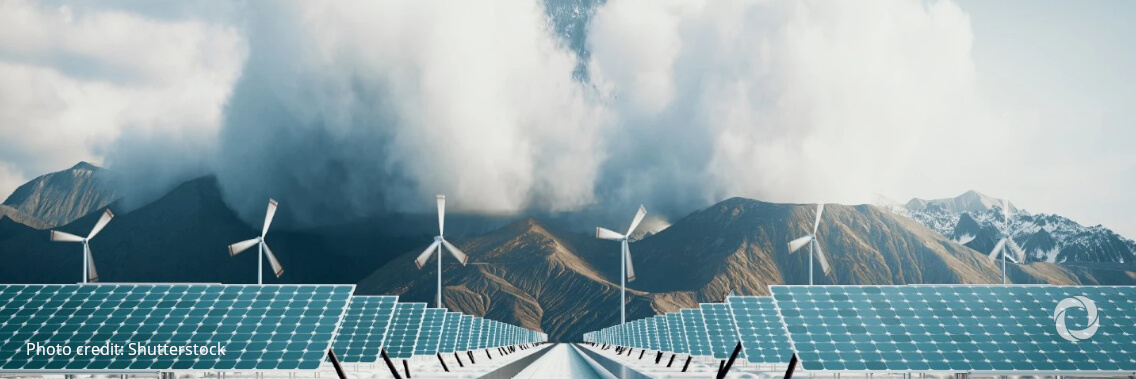For over two centuries fossil fuels have literally fueled the world’s economic expansion. But this prosperity has left a trail of CO2 gases in its wake and global warming now threatens to derail the very prosperity achieved so far. This is the prosperity paradox: the more the world grows, the more CO2 it emits and the more we compromise the future.
Decoupling economic growth from CO2 emissions is a top priority for many but efforts and pledges to do so have fallen short. In the last six decades, while global GDP per capita has nearly tripled, CO2 emissions have quadrupled. Not everyone has emitted equally. Developed countries account for a whopping 58.6% of emissions, developing countries contribute 40.9%, and least developed countries (LDCs) only 0.5%. But the most severe economic consequences of climate change are expected in the tropics, the home of the developing world.
The inequality of CO2 emissions
Considering these inequalities may help make policies more effective and ensure the burden doesn’t fall unfairly on the most vulnerable. The world’s poorest nations, LDCs, are confined to the bottom left corner of the chart with low incomes and low CO2 emissions per person. And as economies grow, so do their per capita and total emissions.
For centuries, fossil fuels have powered economic growth – a link we must now break to protect our future.
But not everyone has emitted CO2 equally.
An @UNCTAD blog explores inequalities in emissions & what’s needed for an inclusive energy transition. https://t.co/tRCZmGax7h
— UNCTAD (@UNCTAD) April 11, 2022
The first difference is between richer and poorer countries. The average citizen in an industrialized country can emit 50 or even 100 times more than the average citizen in a poor country. This highlights the stark differences in production and consumption possibilities.
Imagine that you were only allowed to emit as much CO2 per year as your plasma TV or your fridge. How much could you produce? How much could you manufacture? People in the poorest nations like Togo, Haiti, and Mozambique face this constraining reality every day.
The second difference is in per capita emissions for countries at a similar income level. For instance, the US and Denmark, or Oman and Chile, have similar GDP per capita, but their emissions per person differ by over 200%. South African and Colombian citizens also have similar average incomes, but one produces more than four times the emissions of the other.
Natural resource endowments such as oil, carbon, gas, water sources, and technology influence how much CO2 is emitted by a unit of output and are the main drivers behind these differences. But inequalities in CO2 emissions aren’t just an issue of rich versus poor countries. They’re also found in emissions within countries, with high emitters in low- and middle-income countries and low emitters in rich countries.
The 2022 World Inequality Report shows that the richest 1% of the world population accounts for 17% of total emissions. The next 9% accounts for 31.8%, while the middle 40% accounts for 40% of total emissions.
Lastly, at only 12% of total emissions, the poorest 50% of the world population emits the least. Sadly, they’re most likely to face the harshest consequences of climate change with the least means. Income inequality is closely related to CO2 emissions inequalities. The more you have, the more energy you consume and the more you emit.
Let’s use an example some people may relate to. Only 20% of the world’s population has traveled by plane. If you travel economy class from Paris to New York and back, you’d generate more CO2 emissions than the average person in India, Costa Rica, or the Philippines in a year.
If you travel a little longer, say from London to Cape Town and back, you’d generate more CO2 emissions than the average person in Mexico, Brazil, or Indonesia in a year.
Why trade, technology, and investment matter in the transition
The challenge for developing countries is to grow without increasing per capita emissions. But this has never happened. Developing countries are in uncharted territory and they need support.
For these countries, the only way to reduce emissions, without compromising economic growth, is through better technology to reduce energy and carbon intensity. This stresses the importance of two of the main channels of technology transfer: international trade and foreign direct investment.
For instance, trade policies that help reduce tariffs and non-tariff barriers for environmental goods and services can accelerate decarbonization and energy transition technologies at a lower cost. They can also widen access to those without modern energy services and products.
Foreign direct investment can make environmental technology more accessible and available locally. These communities can benefit from increased knowledge transfer and more efficient production. These must be coupled with national investment in research and innovation not only to adapt already available technologies to local conditions but also to developing countries’ own capabilities.
Efforts to pursue an energy transition should focus on facilitating technology transfer and providing access to finance. This requires an industrial transformation that adapts industries to reduce their risk of climate change while increasing productivity, fostering employment, and raising living standards.
This should also promote adaptation measures that increase resilience and reduce exposure and risk in climate-sensitive sectors. An energy transition is the only way out of our prosperity paradox. But efforts to decarbonize the economy must consider current inequalities in CO2 emissions. This can help make policymaking more effective and an energy transition more inclusive.

